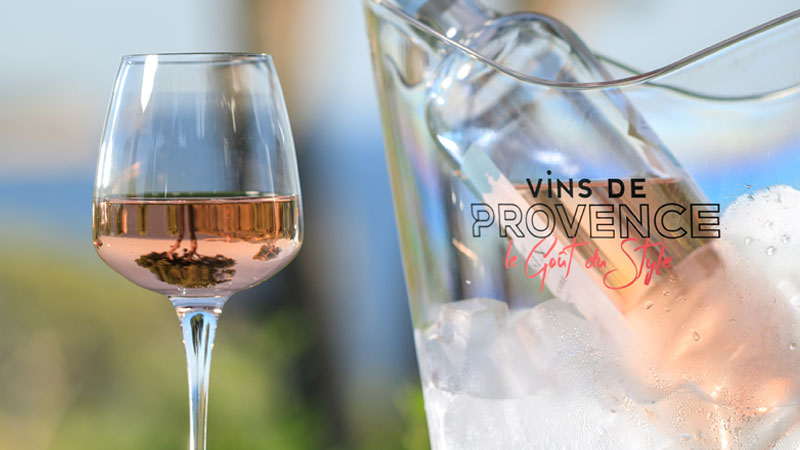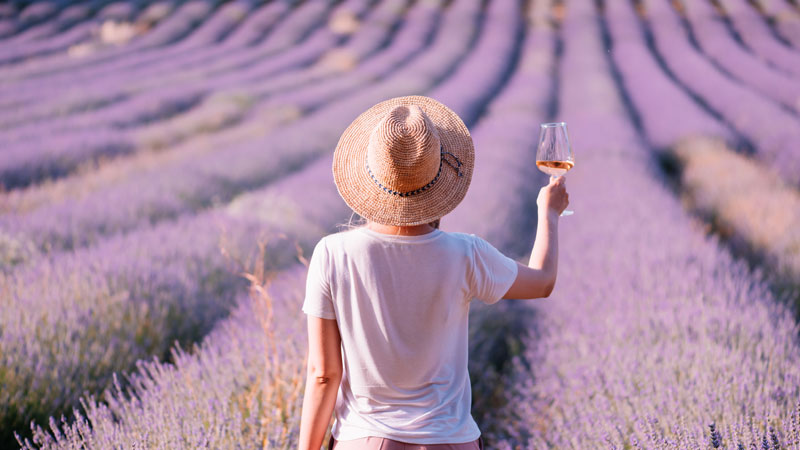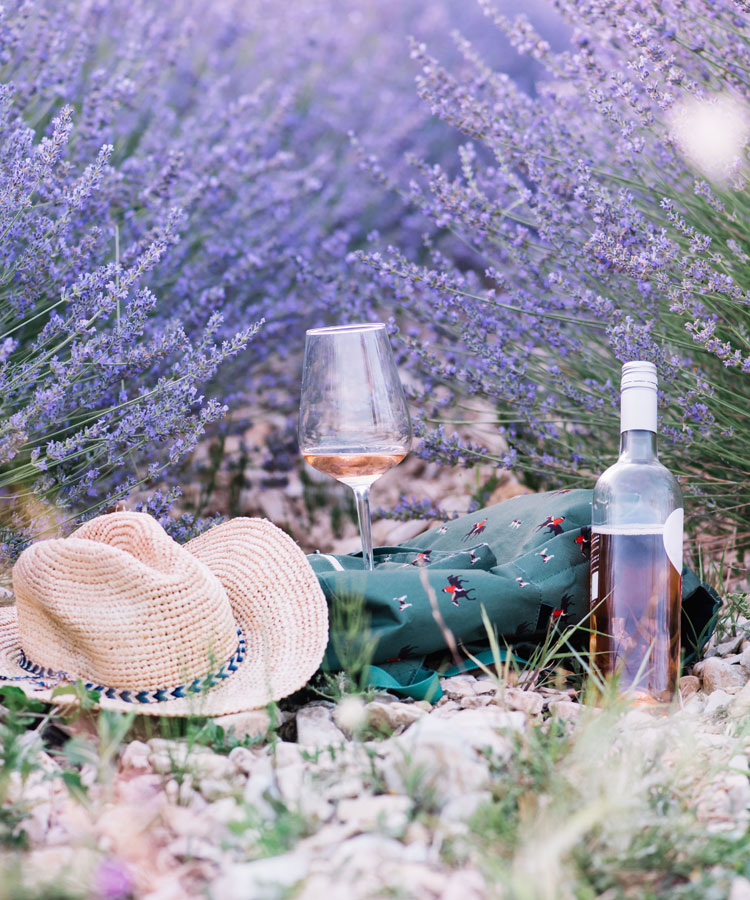
A quick scan of store shelves is proof that we are all moving toward a more colorful future — a future that is, increasingly, rosy. From gin to beer to vodka to cider in pretty pastels and electric hot pinks, beverage makers of all types and sizes are seizing on the overwhelming success of rosé wine, the consumption of which has been on an upward trajectory the world over for the last 30 years. In unheard-of growth, popularity of the pink wine soared 53 percent from 2016 to 2017, according to Nielsen data — and the market shows no signs of slowing down.
The rosé phenomenon originated in the vineyards of southern France. Approximately 2,600 years ago, Phocaeans carried grapevines from Greece to modern-day Provence, where they had not yet perfected the maceration process, and pink juice was embraced throughout the Mediterranean. The region was the first area for wine production in France, and those early pink blends— the precursors to the rosé we imbibe today — are the country’s oldest wines.
Provence remains the leading French region for rosé production. Its pastel wines are refreshing and dry, revealing aromas of red fruit, citrus, cool, green melons, flowers, and herbs. Provençal rosé reflect a terroir that stretches across deep gorges, 100 miles of Mediterranean coastline, and hills and mountains heady with lavender and winds that help moderate temperatures and reduce excessive humidity.
There are nine distinct AOP (Appellation d’Origine Protégée) regions within Provence. Within these areas, there are three major regions: Coteaux d’Aix-en-Provence, Coteaux Varois en Provence, and Côtes de Provence; and five terroir designations: Côtes de Provence Sainte-Victoire, Côtes de Provence Fréjus, Côtes de Provence La Londe, Côtes de Provence Pierrefeu, and Côtes de Provence Notre Dame des Anges (official since September 2019). The wines from each region offer unique flavors, reflecting their individual terroirs.
And while provenance is indisputably important, the truth is Provençal rosés are best known for their becoming color — or, rather, colors. The Provençal wine council Conseil Interprofessionnel des Vins de Provence, has defined the color according to the following fruit-themed hues: peach, melon, mango, pomelo, mandarin, and red currant.

As consumers continue to pick up on — and enjoy — these nuances, rosé moves further away from only being thought of as fair-weather refreshment to a mainstream, year-round drink alongside other ever-popular options such as Cabernet Sauvignon, Pinot Grigio, and Chardonnay. According to wine researchers, production and consumption of rosé wines are projected to increase to 25 million hectoliters (or 660 million gallons) by 2035.
With a major boom in export sales, especially in the U.S., since 2014, Provence has met the challenge of not only focusing on premium products but also increasing quality for the discerning international palate. Today, as competition from other notable wine regions has increased and the focus on sustainability in winemaking grows ever more important, the pressure to produce premium wines in an environmentally friendly way is on. Provence, with its dry, warm climate is not only ideal for making rosé, but it lends itself to sustainable, biodynamic, and organic growing practices.
Not surprisingly, the French consume most of Provence’s — and the world’s — rosé, accounting for one-third of global rosé consumption. In fact, French sales have tripled over the last quarter-century. One out of every three bottles of wine sold in France is a rosé, with French citizens over the age of 15 consuming about 21 bottles per person per year. But Americans are catching up, sipping up 47 percent of rosés exported from Provence. According to the Conseil Interprofessionnel des Vins de Provence, our preferences for pink span the color continuum, too, from nearly red Spanish rosados to traditionally pale Provençal rosés.
An affinity for dry rosés, in particular, helps explain why U.S. drinkers have increased their consumption of Provençal pinks (a preference that is mirrored by growing interest from the U.K., Canada, and Australia). That is, as consumers’ thirst for pink wine has evolved and expanded, so has their taste for classically dry wines. According to research from AGREX-FranceAgriMer, since 2013, global production of light-colored rosés has increased by 4 percent, while preference for darker rosés has dropped.
Whereas rosé may have once been conceived as a simple, fruit-forward wine with notes of strawberry and raspberry, consumers are now delving into the intricacies of the wines — where they’re from, the level of acidity, the weight of the wines.

Fondness for Provençal rosé has as much to do with taste as it does the French lifestyle: a spirit of conviviality, beauty, and the simple pleasure of enjoying wine with people you care about. Dubbed the “wine of freedom,” it also symbolizes consumers’ right to explore what they love and pursue flavors that are new and unique. Éric Pastorino, a third-generation winemaker and President of Côtes de Provence, says, “I prefer that people drink rosé wine when they are happy.”
The rosé-all-day movement has morphed into rosé all year, especially in warmer climates. Consumers are branching out and trying new styles and flavors. A fun category of wine to start with, the proliferation of rosé has consumers ready to try something new and expand horizons.
With global demand at an all-time high, growers in Provence are increasing their plantings of vines for rosé production. Today, nearly 90 percent of Provence’s vineyards are dedicated to rosé grapes, including Mourvèdre, Syrah, Grenache, and Cinsault.
Pastorino explains that this has large-scale impact on vineyards in Provence. “Over the last seven years, the exports of wines of Provence have seen an explosive growth overall,” he says. “The industry today is working to adapt to this evolution, but we have plenty of challenges ahead of us.” With limited land availability, growers are focusing more and more on optimizing quality to keep up with the market. This involves all aspects of wine management, from moisture and nutrient control to foliage care, as well as timing the harvest right.
While the market strives to catch up with consumer demand, one thing is clear: Rosé is here to stay. Consumers can expect more rosé goodness in the years to come: increased variety, higher quality, more ways to experience deliciousness. Whether bright and bold, soft and sweet, or dry and nuanced, the future is coming up pink.
This article is sponsored by the Wines of Provence.

